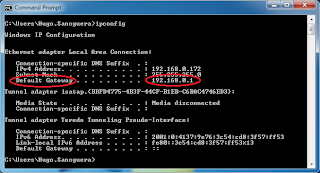But then, three months ago, I found out about ThinVNC while doing some research on HTML5 technology. I tried ThinVNC immediately and it simply worked fine!. I am happy now :)
I found ThinVNC which is a fantastic remote desktop server that does not use its own viewer or client. I connect to home computers from work, university or cyber-cafes. I can basically access these computers from anywhere using Google Chrome, Firefox or Safari. IE works too but it needs Google Chrome Frame.
I read that ThinVNC uses Web Sockets if possible. Firefox is my favorite browser but it does not support Web Sockets yet. So, Google Chrome works faster and better than Firefox.
These are the computers that I connect to frequently for personal use:
- At home
- Pentium I5 running Windows 7. ThinVNC is installed on this PC and I use it as gateway (ThinVNC provides this functionality) to access the rest of my pcs at home. In this way I only had to open ports for this computer.
- Pentium Quad-Core, Core-Duo and "only Pentium" running Windows Vista and Windows XP. Both computers also have ThinVNC. I access through my Windows 7 with ThinVNC as gateway.
- At work
- Pentium I7 running Ubuntu 64-bit. I use Google Chrome to connect to my home computer. I still use Firefox for other web sites.
- Macbook. Safari is the only option here. It runs very fast.
- At university
several computers with different OS. I commonly use Firefox. Google Chrome is not installed in all computers. - Using my iPad
Safari. I access very quickly to my Microsoft Outlook, Facebook, Twitter, and other files like I'm at home. - Other places
Google Chrome or Firefox, in this order.
Here I listed the steps that you should follow in order to install and configure ThinVNC and be able to access from anywhere.
A) Start by installing DynDNS, so you can localize your PC from anywhere.
- Create a DynDNS account and set up a free Dynamic DNS Host.
- Install the DynDNS client for Windows.
http://www.dyndns.com/support/clients/dyndns-updater-guide.html
B) Download and install ThinVNC in the PCs you want to access.
- Download ThinVNC (It doesn't require registration).
http://www.thinvnc.com/
- Install ThinVNC with the default options. Then, change the default user and password. This is very important.
C) Configure your router to redirect all the incoming traffic in a specific port to the computer that acts as a gateway or the destination computer - if you only want to access one computer.
Note: you don't need to do this if you connect directly to the modem (to a mobile modem, for example).
These images show this configuration in 3-com and D-Link routers. Click on the images to open them in another tab.
You should configure a Virtual Server which is used to enable the hosting of Internet Services (ThinVNC in this case) by opening one incoming port (8081, the default secure port in ThinVNC) in the Router and redirecting the unsolicited requests from the Internet to a specified computer. Also, you can open the default unsecure port (8080) for ThinVNC.
The common URL to your router is http://192.168.0.1/ but you can verify it with the following steps:
- Open a Command Prompt window
- Type IPCONFIG at command line. Then press ENTER.
- See "Default Gateway" address. This is your router's IP.
D) Enjoy.



well, i don't use ms-windows, so this windows-msdos-prompt-window looks completelly nonsense for me, since i'm trying to connect two linux computers - i'm now trying with Remmina, and the only thing i can get it "Unable to connect to VNC server" or "Unable to connect to RDP server"
ResponderBorrar